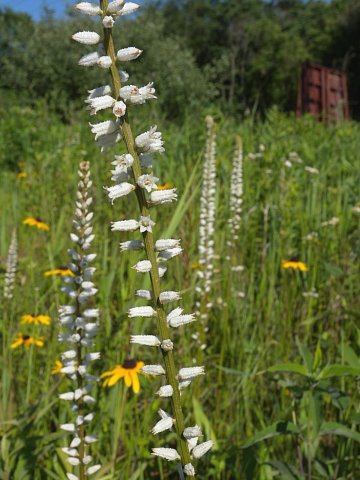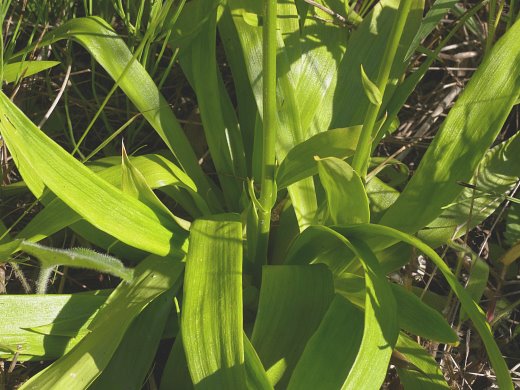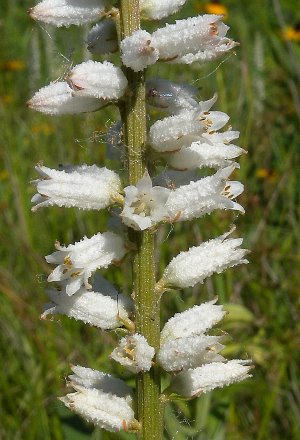
Along the upper half of the flowering stalk, is a spike-like raceme of flowers about ½-1½' long. Each flower is 7-10 mm. in length, consisting of a 6 white tepals with slightly recurved tips, 6 inserted stamens, and a pistil. The elongated tepals are joined together, except at their tips, forming a narrow tubular shape. The outer white surfaces of the tepals have a texture that is conspicuously warty-mealy. At the base of each flower, there is a short slender pedicel. At the base of each pedicel, there is a slender deciduous bract about 2-3 mm. in length. The central stalk of the raceme is pale green, shallowly grooved, and often pubescent. The blooming period occurs from late spring to mid-summer, lasting about a month. Afterwards, small ovoid seed capsules develop that become 3-5 mm. in length. Each seed capsule is 3-celled and contains numerous tiny seeds about 0.5 mm. in length. Each seed capsule splits open toward its apex to release the seeds to the wind. The root system consists of stout rootstock that resembles a rhizome; it has fibrous roots below.

Cultivation: The preference is full or partial sun, moist to dry conditions, and very sandy soil. Colic Root is intolerant of competition from taller plants.
Range & Habitat: The native Colic Root occurs in northeast Illinois, where it is uncommon (see Distribution Map). Habitats consist of sand prairies, sandy shrub prairies, sand flats, openings in sandy savannas, and sandy areas along railroads. Open areas with sterile sandy soil are preferred.
Faunal Associations: Apparently very little information is available about floral-faunal relationships for this species. Consumption of excessive amounts of the rootstock is known to cause diarrhea and vomiting in humans.

Photographic Location: An upland sand prairie at the Indiana Dunes National Lakeshore in NW Indiana.
Comments: When Colic Root is in bloom it is very conspicuous because of its tall spike-like racemes of white flowers. These flowers often rise far above the surrounding ground vegetation in the open sandy areas where this species occurs. The low basal leaves, on the other hand, are relatively inconspicuous and easily overlooked. The flowers of Colic Root are quite distinct in appearance because of the warty-mealy outer surface of their tepals. Thus, Colic Root is easily identified when it is in bloom. This is a wonderfully unique wildflower.